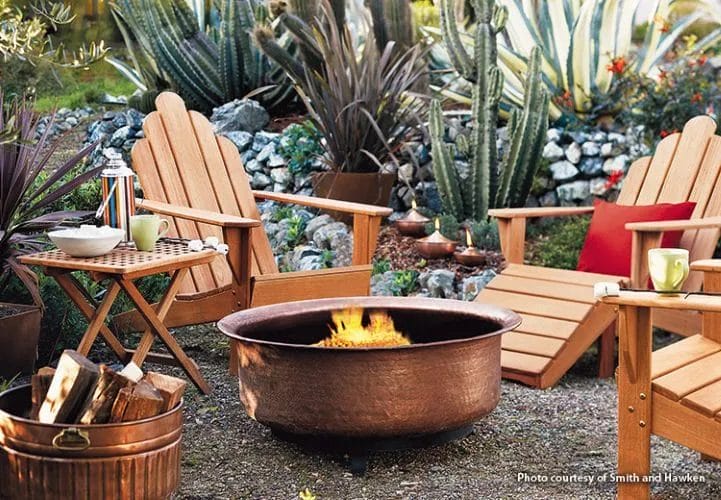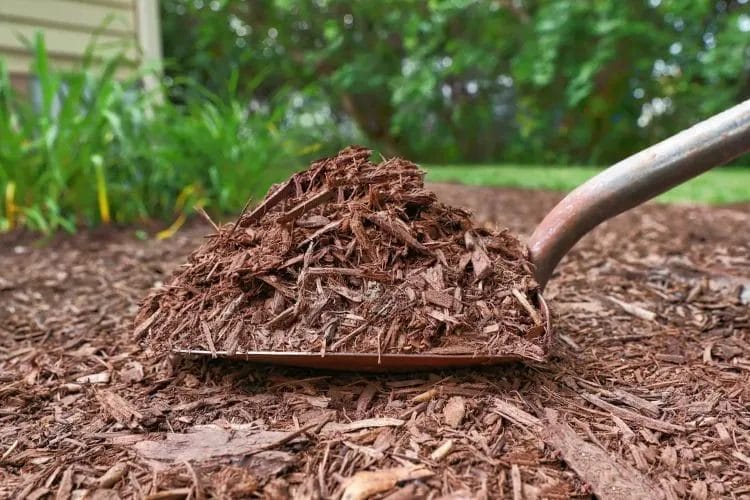
Soil Benefits and Best Practices
Applying a 2–4 inch layer of organic mulching like shredded hardwood or composted bark helps you limit evaporation, stabilize soil temperatures, and feed microbes that improve structure; in landscape projects by Smith Brothers Landscape, this depth cut summer irrigation needs by about one weekly cycle while keeping root zones cooler. Smith Brothers Services incorporates mulching into seasonal plans, and Smith Brothers Tree Services advises keeping mulch 2–3 inches from trunks to prevent rot and pests.
Choosing the Right Mulch for Your Garden

Assess soil texture, plant water needs, and sun exposure to match mulch function: sandy soils benefit from composted bark to retain moisture, clay soils need coarse mulches to improve aeration, and raised beds often perform best with 2–3 inches of compost or straw. You can request a soil test or installation estimate from Smith Brothers Services to calculate coverage—1 cubic yard covers about 108 sq ft at a 3-inch depth.
Organic vs. Inorganic: Finding Your Fit
Organic mulches like bark, compost, and leaf mold add nutrients as they decompose (rates: leaves 6–12 months, wood chips 1–3 years) and work well at 2–4 inches depth; inorganic options—gravel, rubber, landscape fabric—last longer and suit pathways or drainage problems but can raise soil temperature and don’t improve tilth. You should use organic in vegetable beds and choose inorganic for high-traffic areas; Smith Brothers Landscape, can help evaluate site-specific trade-offs.
Popular Organic Mulches and Their Benefits
Shredded hardwood bark, wood chips, compost, straw, and pine needles each offer different benefits: bark and wood chips suppress weeds and last 1–5 years, compost boosts soil biology and adds ~1–2% organic matter annually, straw is light and insulating for vegetables, pine needles suit acid-loving plants. You should avoid piling mulch against stems; Smith Brothers Services recommends 2–4 inches for beds and a thinner 1–2 inches under shrubs to balance moisture and air.
Hardwood bark works well around ornamentals, pine needles lower pH for azaleas and blueberries, and grass clippings provide quick nitrogen if dried and applied no thicker than ½ inch to prevent matting; composted municipal biosolids should meet local standards. To estimate material, you can note 1 cubic yard covers ~108 sq ft at 3 inches—so a 1,000 sq ft bed needs roughly 9.3 cubic yards. Smith Brothers Tree Services often specify wood chips for tree basins to reduce compaction and retain moisture.
Techniques for Effective Mulching

Layering Strategies for Maximum Moisture Retention
You can build layers that lock in water by alternating coarse and fine materials: lay 2–3 inches of cardboard or newspaper over soil, add 1–2 inches of compost to feed microbes, then finish with 2–4 inches of wood chips or bark for insulation. Trials by Smith Brothers Services found beds with a cardboard base retained about 30% more moisture over 10 days than bare soil. Avoid compacting layers so air and beneficial organisms can move through the profile.
Ideal Application Depths for Different Mulch Types
You should apply 2–4 inches of shredded bark or wood chips around shrubs and perennials; use 1–2 inches of compost as a top-dressing; lay 3–4 inches of straw in vegetable rows; place 1–2 inches of gravel on paths; never exceed 4 inches over crowns to reduce rot risk. Field tests by Smith Brothers Landscape, showed 3 inches of wood chips balanced moisture retention and root aeration for young oaks.
- Start with a weed-suppressing base like cardboard or newspaper.
- Keep mulch pulled 2–3 inches away from trunks and stems to prevent decay.
- Top up organic mulches annually rather than piling them on thick at once.
- The choice of mulch should match plant needs: wood chips for trees, straw for vegetables.
| Mulch Type | Recommended Depth |
|---|---|
| Shredded bark | 2–4 inches |
| Wood chips | 2–4 inches |
| Compost (top-dress) | 1–2 inches |
| Straw | 3–4 inches |
Adjust depths by plant stage: use a light 0.5–1 inch of straw on seedbeds so seedlings get light; established perennials tolerate 2–3 inches; young trees benefit from 2–3 inches kept 3–4 inches away from trunks to avoid bark moisture; beds mixing compost under wood chips often perform best. Crews at Smith Brothers Tree Services report fewer collar issues when you maintain a clear trunk flare and consistent 2–3 inch mulch depth around root zones.
- Check soil moisture before applying mulch—avoid covering waterlogged ground.
- Use coarser material nearest soil to preserve porosity for roots and microbes.
- Refresh thinly each spring rather than adding a deep layer once.
- The best practice is to match mulch type and depth to species, soil and climate.
| Plant/Use | Depth |
|---|---|
| Seedbeds | 0.5–1 inch (light straw) |
| Vegetable beds | 2–3 inches (straw or compost) |
| Perennial borders | 2–3 inches (wood chips) |
| Trees & shrubs | 2–3 inches (keep 3–4 in from trunk) |
Timing is Everything: When to Install Mulch

Apply mulch in spring once soil temperatures consistently reach about 55°F and initial weed flushes are pulled; aim for 2 inches on annual beds, 3 inches for perennials, and 3–4 inches around trees while keeping mulch 6 inches away from trunks. In fall, top-dress after plants go dormant—typically late October–November in temperate zones—to insulate roots without delaying soil warming. Smith Brothers Services recommends checking soil with a probe before widespread application.
Seasonal Considerations for Optimal Impact
Spring mulching suppresses early weeds and conserves moisture during warming; you should remove old, matted mulch first. Summer maintenance includes a light replenishment (0.5–1 inch) after a major irrigation or rain to maintain 2–3 inches total. Late-fall mulching adds insulation—add 1 inch to your typical depth in cold zones—but avoid mulching too early in wet climates to prevent fungal issues. Smith Brothers Landscape times applications by local frost dates.
The Influence of Climate on Mulching Timing
Arid regions benefit from earlier, slightly deeper mulch (2–3 inches) to cut evaporation, while humid climates favor lighter layers (1–2 inches) and spring application to allow quick drying; cold climates gain from a 3–4 inch insulating layer applied after soil has frozen once. You can adjust timing by monitoring soil moisture and local rainfall patterns and consulting Smith Brothers Tree Services for species-specific recommendations.
For example, in the desert Southwest Smith Brothers Services pairs 2–3 inches of shredded hardwood with drip irrigation to reduce watering frequency, whereas in the Pacific Northwest you should use thinner bark chips and later spring application to minimize prolonged wet soil that encourages rot; in USDA zones 4–6, add 1 extra inch in late November to reduce freeze‑thaw heaving around shallow roots.
Beyond Moisture: Unraveling How Mulching Suppresses Weeds

Mulch limits weed pressure by cutting light, blocking seed-soil contact and moderating soil temperature; a 2–3 inch layer of shredded hardwood can reduce annual weed emergence by roughly 80–90% in ornamental beds within a season. You can further suppress deep-rooted perennials by combining coarse bark at 3–4 inches with periodic shallow cultivation. Contractors like Smith Brothers Services tailor mulch depth and type to species you face, which often halves post-installation maintenance for established beds.
The Science Behind Weed Prevention
Light exclusion is the primary mechanism—most weed seeds need surface light to germinate—while a physical mulch barrier prevents seed burial and contact; decomposition also boosts microbial competitors and can shift soil temp 2–6°F, slowing small-seeded annuals. Particle size matters: fine mulches compact and suppress tiny seeds more effectively, coarse mulches allow better infiltration. You can exploit allelopathic residues from certain materials, and local pros such as Smith Brothers Landscape, use texture matching to target specific weed profiles.
Integrating Mulching with Other Weed Management Strategies
Combine mulch with pre-emergent herbicides, cover crops and spot hand-weeding for best results: apply pre-emergent so it contacts soil, then lay 2–3 inches of mulch to extend control; solarize beds for 4–6 weeks before mulching to tackle stubborn perennials. Schedule hand-pulls every 4–8 weeks during the season and reserve spot herbicide use for identified problem species. Clients of Smith Brothers Services commonly report a 50–70% drop in manual weeding time after adopting this integrated approach.
You should maintain 2–3 inches of shredded hardwood in tree and shrub zones, pull mulch 2–3 inches away from trunk flares to reduce collar rot risk, avoid exceeding 4 inches depth, and top up roughly 1 inch yearly as advised by Smith Brothers Tree Services; for vegetables use 3–4 inches of straw and replace annually. Installing drip irrigation beneath mulch can cut water use by up to 50% while keeping weed germination lower along the planted rows.
Maintaining Your Mulch for Peak Performance

Inspect your beds every 2–3 months for compaction, washout, and weed pressure; aim to sustain a 2–3 inch organic layer for moisture retention and weed suppression. Replenish shredded bark or composted hardwood by about 1 inch annually, or pine straw yearly. Leave a 2–3 inch clear space around trunks to prevent rot. For scheduled upkeep, Smith Brothers Services offers seasonal programs that match mulch type to soil and plant needs.
Regular Check-ups and Maintenance Practices
Schedule monthly walk-throughs during the growing season to hand-pull weeds, loosen matted areas with a garden fork, and redistribute displaced material after storms. Top-dress thin spots with 1 inch of fresh mulch per season or 2–3 inches total annually for new beds. Maintain a crisp edge to prevent grass encroachment and keep mulch off stems; Smith Brothers Landscape, can perform routine inspections and corrective mulching.
Signs That Your Mulch Needs Replacement
Watch for a sour, anaerobic odor, visible fungal fruiting bodies, persistent weed outbreaks, or mulch compressed below 1 inch—each signals diminished function. Surface matting that sheds water rather than absorbing it indicates replacement is needed, as do repeated pest problems or moldy layers. Organic mulches typically require full replacement every 1–3 years depending on material and exposure.
Compaction commonly cuts porosity by up to 50% within 18–24 months, reducing infiltration and oxygen flow to roots; stripping and replacing the layer often restores performance. In a municipal bed study by Smith Brothers Services, replacing compacted bark mulch improved percolation rates by about 30%. Continuous weed breakthrough despite a 2–3 inch cover, or signs of termite or vole activity, should prompt you to consult Smith Brothers Tree Services for removal and treatment options.
To wrap up
Taking this into account, you should select organic mulch (wood chips, shredded leaves) applied 2–4 inches deep over a weed barrier, keep mulch away from stems to protect your plants, replenish annually, and target high-evaporation zones to maximize moisture retention and suppress weeds; for professional support, rely on Smith Brothers Services, Smith Brothers Landscape, and Smith Brothers Tree Services.




